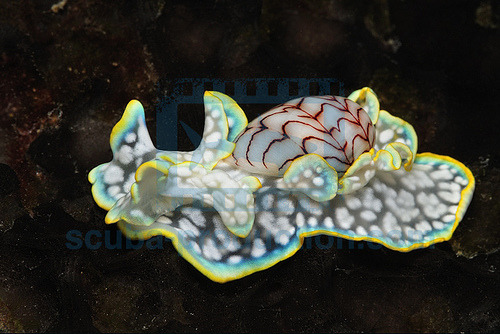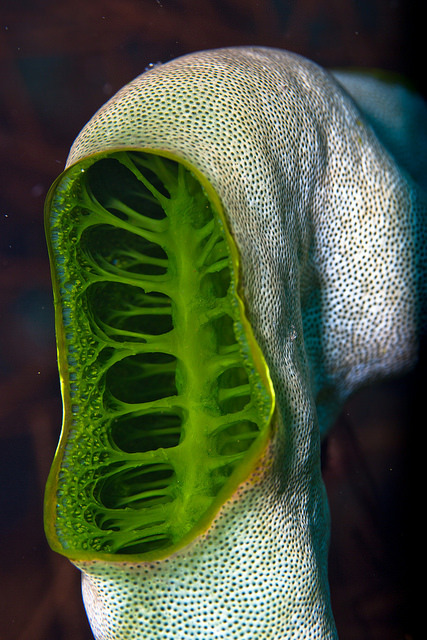It’s No Secret That We Think Sea Otters Are Pretty Swell. 🦦🌊
It’s no secret that we think sea otters are pretty swell. 🦦🌊
They are critical in keeping our kelp forests healthy and more resilient to climate change.
More Posts from Simplyphytoplankton and Others
Greta Thunberg, international climate activist.
An icon.

To post about the miniature melo (Micromelo undatus) may seem a bit odd, as it is not a nudibranch but a closely-related sea snail! Its thinly-calcified shell is easily seen covering half of its back and is patterned with dazzling brown-red lines, a stark contrast to the blue, white-spotted body below. It lives in many tropic waters, whether that be Japan or Florida, and reaches about 3cm in length. It eats polychaete worms, and uses their toxins as its own.





First images of creatures from Antarctic depths revealed
Photos by Christian Åslund / Greenpeace

Phytoplankton
The word phytoplanton comes from the greek words phyto (plant) plankton (made to wander) And what they do for the world is amazing! They are a great example of doing SO much even though they are small. Without them we wouldn’t have enough oxygen. The fish and sea life would all most definately die, which would effect food for humans and land animals. It would effect cultures and peace in general, because without sea life many beliefs and practices would be effected as well. Without them the sea animals wouldn’t be able to “breathe”. A good way humans can make sure to keep the phytoplankton around is by making sure we don’t litter, or pour harmful chemicals into the ocean that could kill them. A great place to learn more about this is here:
http://earthobservatory.nasa.gov/Features/Phytoplankton/
http://save-as.org/GreenNews/News/phytoplankton-the-oceans-vital-force-is-dying-out_1675
http://www.savethesea.org/plankton.html

With Stephen Hawking’s passing, today is a sad day for science. But amongst all his praise and achievements in the fields of physics, for me personally his biggest achievement was making a grand, full life despite the terrible misfortune of being diagnosed with ALS. It would have been easy to become a recluse, embittered with the hand he’d been dealt, a brilliant misanthrope. But this was a man who maintained his sense of humor and refused to be mentally beaten. Three years ago, he told One Direction fans that the theory of alternate universes could provide a reality where Zayn Malik was still in the band. He conducted an interview with John Oliver where his factual, deadpan delivery was funnier than his interviewer, managing the cheekiest grins as he did so. And let us not forget that Stephen Hawking is the only person to have ever portrayed themselves in a Star Trek episode (Next Generation, “Descent, Part 1″), where he appeared alongside actors portraying Einstein and Sir Isaac Newton, whom he proceeded to defeat in poker.

Hawking’s observations on black hole radiation, string theory, alternate universes and artificial intelligence are things that will probably forever remain beyond most of us. But we could all learn a thing or two from his humanity.

This may look like a beautiful flower blooming beneath the waves, but it’s actually an animal!
This stalked crinoid was spotted in the deep waters of National Marine Sanctuary of American Samoa. The feathery “petals” you see are arms, which this invertebrate uses to grasp small particles of food out of the current. Crinoids can also use these arms to crawl along the seafloor if they need to relocate!
(Photo: NOAA Office of Ocean Exploration and Research, 2017 American Samoa)

Darwin is most famous for his theory of evolution. But did you know that much of his life’s work was influenced by his time at sea?
In the spirit of Darwin Day, here is one of his observations of bioluminescent plankton while aboard the HMS Beagle on October 24, 1832:
“The night was pitch dark, with a fresh breeze. — The sea from its extreme luminousness presented a wonderful & most beautiful appearance; every part of the water, which by day is seen as foam, glowed with a pale light. The vessel drove before her bows two billows of liquid phosphorus, & in her wake was a milky train. — As far as the eye reached, the crest of every wave was bright; & from the reflected light, the sky just above the horizon was not so utterly dark as the rest of the Heavens.” Charles Darwin
Learn more about Darwin’s connection to the ocean from this article at the Ocean Portal.
Photo Credit: unknown, Turin Museum of Human Anatomy
-
 jasjabberwocky liked this · 1 week ago
jasjabberwocky liked this · 1 week ago -
 serendip8y reblogged this · 1 week ago
serendip8y reblogged this · 1 week ago -
 chaoticstrays reblogged this · 3 weeks ago
chaoticstrays reblogged this · 3 weeks ago -
 tardis-scooter reblogged this · 1 month ago
tardis-scooter reblogged this · 1 month ago -
 chotzooi reblogged this · 1 month ago
chotzooi reblogged this · 1 month ago -
 paprikacrocante reblogged this · 1 month ago
paprikacrocante reblogged this · 1 month ago -
 marbearishere reblogged this · 1 month ago
marbearishere reblogged this · 1 month ago -
 mythiious reblogged this · 1 month ago
mythiious reblogged this · 1 month ago -
 mythiious liked this · 1 month ago
mythiious liked this · 1 month ago -
 tardis-scooter liked this · 1 month ago
tardis-scooter liked this · 1 month ago -
 polymoth liked this · 1 month ago
polymoth liked this · 1 month ago -
 seaslimes liked this · 1 month ago
seaslimes liked this · 1 month ago -
 wawa-pi-wawa-pi-wawa reblogged this · 1 month ago
wawa-pi-wawa-pi-wawa reblogged this · 1 month ago -
 harpsichordstars liked this · 1 month ago
harpsichordstars liked this · 1 month ago -
 blkkiwi liked this · 1 month ago
blkkiwi liked this · 1 month ago -
 quercus63 reblogged this · 1 month ago
quercus63 reblogged this · 1 month ago -
 izzymakesachange liked this · 1 month ago
izzymakesachange liked this · 1 month ago -
 angstyteenagesam liked this · 1 month ago
angstyteenagesam liked this · 1 month ago -
 mynameisbirdie liked this · 1 month ago
mynameisbirdie liked this · 1 month ago -
 mumruffin liked this · 1 month ago
mumruffin liked this · 1 month ago -
 faerexoberon69 liked this · 1 month ago
faerexoberon69 liked this · 1 month ago -
 mischieffoal liked this · 1 month ago
mischieffoal liked this · 1 month ago -
 butterflyslinky reblogged this · 1 month ago
butterflyslinky reblogged this · 1 month ago -
 centrumlumina reblogged this · 1 month ago
centrumlumina reblogged this · 1 month ago -
 herbcitty reblogged this · 1 month ago
herbcitty reblogged this · 1 month ago -
 troubaderp liked this · 1 month ago
troubaderp liked this · 1 month ago -
 mxchaoticgood liked this · 1 month ago
mxchaoticgood liked this · 1 month ago -
 voyaging-too reblogged this · 1 month ago
voyaging-too reblogged this · 1 month ago -
 jasper-dracona liked this · 2 months ago
jasper-dracona liked this · 2 months ago -
 summerlimeismethebrony liked this · 2 months ago
summerlimeismethebrony liked this · 2 months ago -
 bethanythebogwitch liked this · 2 months ago
bethanythebogwitch liked this · 2 months ago -
 rockfarkas liked this · 2 months ago
rockfarkas liked this · 2 months ago -
 verdaneart liked this · 2 months ago
verdaneart liked this · 2 months ago -
 owlbear33 reblogged this · 2 months ago
owlbear33 reblogged this · 2 months ago -
 landofvinesandmonoliths reblogged this · 2 months ago
landofvinesandmonoliths reblogged this · 2 months ago -
 rowan-e-ravenwood liked this · 2 months ago
rowan-e-ravenwood liked this · 2 months ago -
 nochromity liked this · 2 months ago
nochromity liked this · 2 months ago -
 sewer-dweller liked this · 2 months ago
sewer-dweller liked this · 2 months ago -
 a-disaster-piece liked this · 2 months ago
a-disaster-piece liked this · 2 months ago -
 bloodborne-on-pc liked this · 2 months ago
bloodborne-on-pc liked this · 2 months ago -
 novaslammer reblogged this · 2 months ago
novaslammer reblogged this · 2 months ago -
 thedutchdemon liked this · 2 months ago
thedutchdemon liked this · 2 months ago -
 bestanimal reblogged this · 2 months ago
bestanimal reblogged this · 2 months ago -
 divergentchangelings liked this · 2 months ago
divergentchangelings liked this · 2 months ago -
 hptradecraft liked this · 2 months ago
hptradecraft liked this · 2 months ago -
 gwynmainblog liked this · 2 months ago
gwynmainblog liked this · 2 months ago -
 gelunnucifera reblogged this · 2 months ago
gelunnucifera reblogged this · 2 months ago -
 dandylions101 liked this · 2 months ago
dandylions101 liked this · 2 months ago -
 a-solitary-sea-rover-backup reblogged this · 2 months ago
a-solitary-sea-rover-backup reblogged this · 2 months ago

Blog dedicted to phytoplankton. Phytoplankton are microscopic organisms that are responsible for half of the photosynthesis that occurs on Earth. Oh, and they look like art... Follow to learn more about these amazing litter critters! Caution: Will share other ocean science posts!Run by an oceanographer and phytoplankton expert. Currently a postdoctoral researcher.Profile image: False Colored SEM image of Emiliania huxleyi, a coccolithophore, and the subject of my doctoral work. Credit: Steve Gschmeissner/ Science Photo Library/ Getty ImagesHeader image: Satellite image of a phytoplankton bloom off the Alaskan Coast, in the Chukchi SeaCredit: NASA image by Norman Kuring/NASA's Ocean Color Web https://earthobservatory.nasa.gov/images/92412/churning-in-the-chukchi-sea
158 posts







